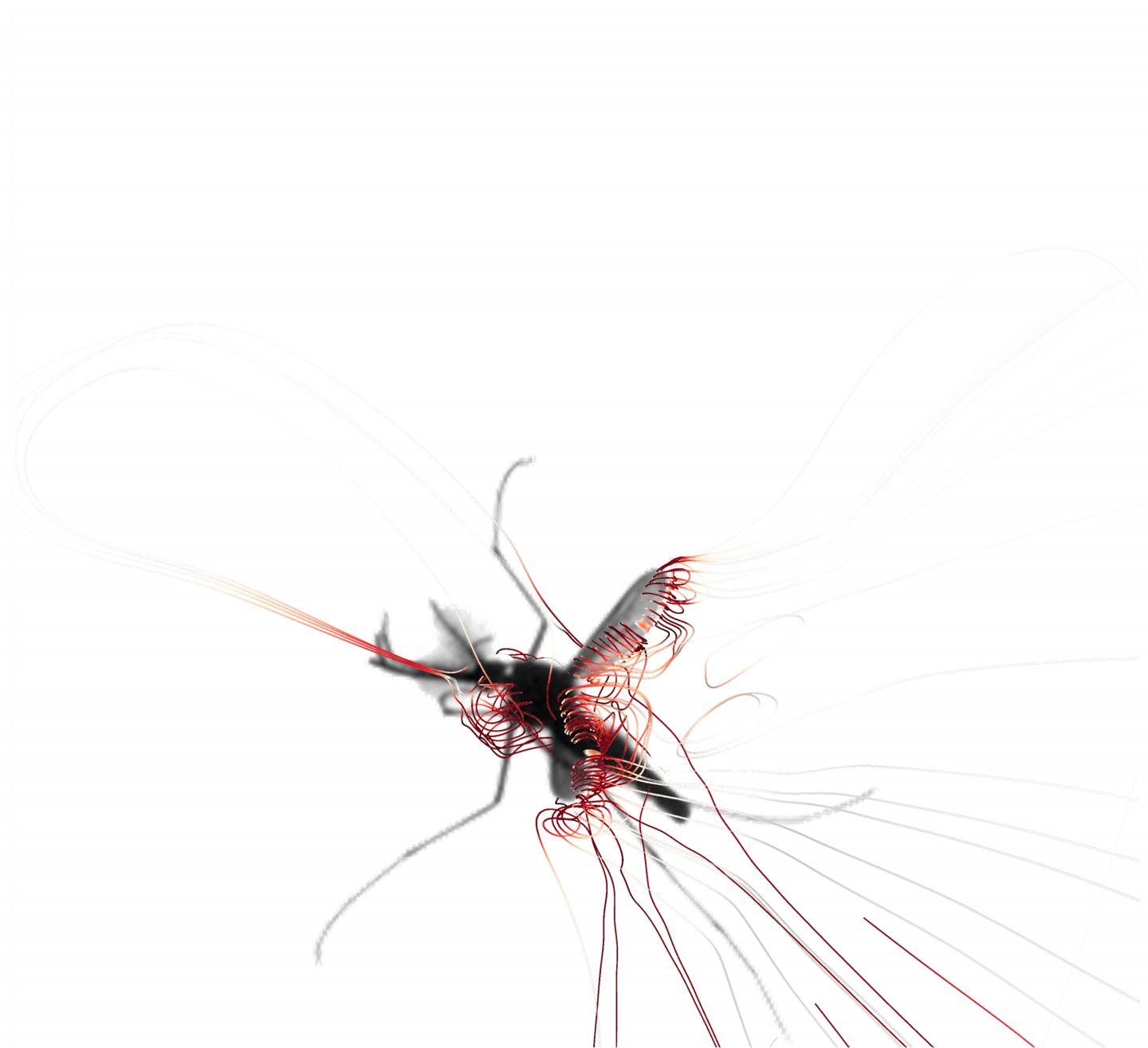Mosquito flight modelling has potential for micro-UAVs
Understanding how tiny mosquitoes execute their distinctive flight patterns could help engineers design ever smaller flying machines.
 The complex air flow patterns generated by mosquitoes' narrow, fast-flapping wings are crucial to understanding their flight (Credit: Bomphrey/Nakata/Phillips/Walker)
The complex air flow patterns generated by mosquitoes' narrow, fast-flapping wings are crucial to understanding their flight (Credit: Bomphrey/Nakata/Phillips/Walker)
Even the most ardent animal lovers find little to love about mosquitoes. They carry a variety of lethal diseases – by some measures, they have killed more humans than any other animal – their bites are irritating and painful even if they don't transfer nasty parasites; they make a horribly annoying whining buzz and just to add insult to injury, the erratic flight paths make them very difficult to swat. Exactly how they fly has until now been very difficult to determine, because of two factors: their very small size and commensurately tiny wings, which are longer and narrower than other flying insects, and the very high speed with which they flap them, around 800 times per second through an angle less than half that of any other flying insect.
Register now to continue reading
Thanks for visiting The Engineer. You’ve now reached your monthly limit of news stories. Register for free to unlock unlimited access to all of our news coverage, as well as premium content including opinion, in-depth features and special reports.
Benefits of registering
-
In-depth insights and coverage of key emerging trends
-
Unrestricted access to special reports throughout the year
-
Daily technology news delivered straight to your inbox










National Gas receives funding to develop Gravitricity underground hydrogen storage system
One single rock salt mine - Winsford - has 23 <i>MILLION </i>cubic metres of void and even allowing for 10% of that void set aside for hazardous waste...